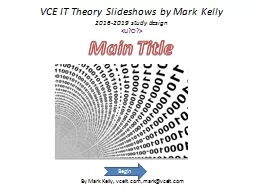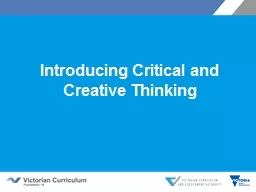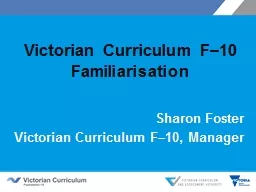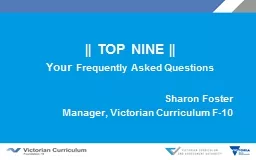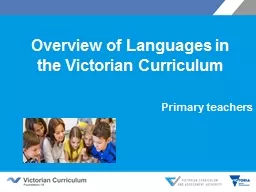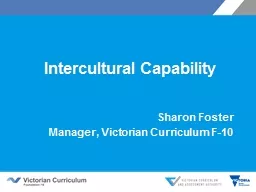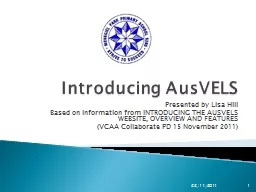PPT-VCAA UPDATE
Author : luanne-stotts | Published Date : 2017-06-17
Whats new with the revised VCE Psychology Whats new with Victorian Curriculum Science F10 Moonee Valley Racecourse Friday 26 February 2016 Maria James Victorian
Presentation Embed Code
Download Presentation
Download Presentation The PPT/PDF document "VCAA UPDATE" is the property of its rightful owner. Permission is granted to download and print the materials on this website for personal, non-commercial use only, and to display it on your personal computer provided you do not modify the materials and that you retain all copyright notices contained in the materials. By downloading content from our website, you accept the terms of this agreement.
VCAA UPDATE: Transcript
Download Rules Of Document
"VCAA UPDATE"The content belongs to its owner. You may download and print it for personal use, without modification, and keep all copyright notices. By downloading, you agree to these terms.
Related Documents





